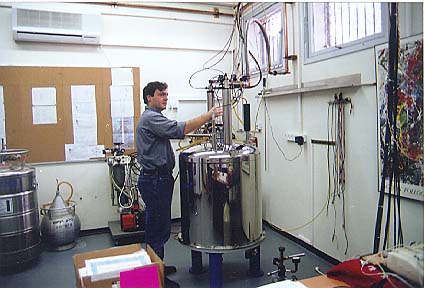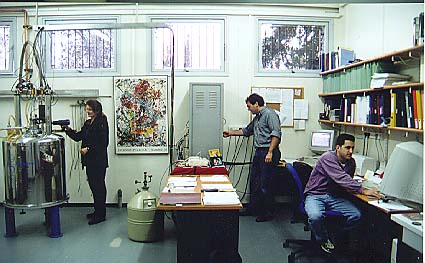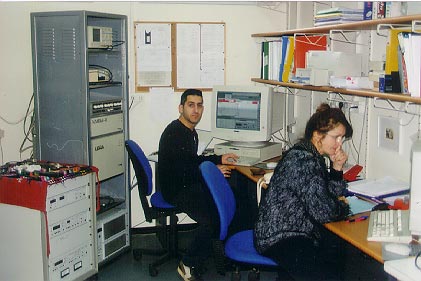Our NMR apparatus is an hybridization of Oxford instruments TeslatronH magnet, Oxford instruments continuous flow cryostat, a TECMAG spectrometer, and a home built head. All systems are controlled by a MAC and experimental parameter such as magnetic field, temperature, frequency etc. can be modified automatically.
The construction of this NMR laboratory was funded by:
- The Israeli Academy of Science (heavy equipment).
- Crown center for superconductivity.
- The Technion new staff support.
Instrument Scientist:
Oren Ofer
Magnet
The leads of the magnets are permanently connected and the field can be swept from zero to 9T in 1G steps. The homogeneity is 2ppm in 1cm3 and no shimming coils are installed.

Cryostat
The Oxford instruments continuous flow cryostat (CF1200 daynamic) allows a working temperature ranging from 1.6 to 450K, and a 62mm sample space diameter.

Spectrometer

The spectrometer is single channel. It is constructed from TECMAG NMRKit-II as a transmitter and receiver, and LIBRA as a pulse programmer and ADC. It uses a PTS-310 frequency synthesizer, and AMT 1KW power supply. Currently we are capable of working between 6-220 MHz due to the AMT frequency range.
Head
The head is made of series-parallel tank circuit using Cylindrical Teflon capacitors. The capacitance can be varied from the top of the cryostat. In order to load a sample the head must be removed from the cryostat.

Origin
Origin 7.0 The experiment’s data are imported into Origin worksheets and brought home for analysis. We have developed specialized macros under Origin for NMR data analysis.
Programer:
Galina Bazalitsky
NMR Publications:
- A. Keren, Spin echo decay in a stochastic field environment, Phys. Rev. B 60, 9279 (1999).
Abstract:
We derive a general formalism with which it is possible to obtain the time t dependence of the echo size for a spin in a tochastic field environment. Our model is based on ”strong collisions”. We examine in detail two examples. In the first one the field distribution has a finite second moment, and in the second one (a Lorentzian) it does not. We find that the echo decay in the first case is exponential in t3 as t->0, and in the second case can be approximated by the phenomenological expression exp (-[2t/T2]b) with 10 limit b =2. In addition, only the first case shows a T2 minimum effect.